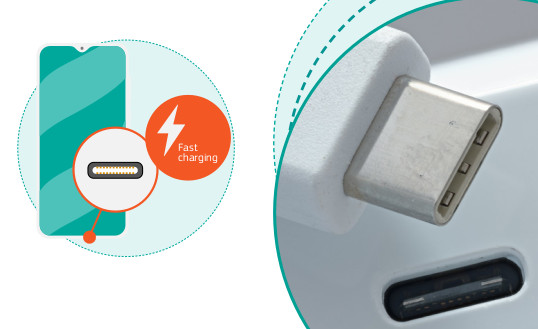
Sharing CMSWire’s coverage of 2022’s must-read news.
In a year chock full of major announcements, advances and acquisitions — with a direct impact on the marketing and CX community — CMSWire stayed on top of all the latest news with in-depth coverage. From the fallout of Elon Musk’s Twitter takeover — and a chatbot that everyone was talking about (and talking to) — to buying property in the metaverse, getting ready for Web3 and preparing for a cookie-less future, here’s a breakdown of 2022’s most talked about news covered by CMSWire.
1. Twitter’s Fallout and the Rise of Social Media Platforms
From the early days in April when Elon Musk purchased more than 9% of Twitter shares — through his $44 billion acquisition of the embattled social media platform and subsequent fallout — CMSWire consistently stayed on top of the ever-developing story.
In May, Alex Kantrowitz evaluated Musk’s plan to fix Twitter that included lengthening character limits, open sourcing the algorithm and effectively putting an end to content moderation — the latter of which caused a storm of controversy.
Following his Twitter takeover, Scott Clark dove into the fallout, its effect on marketing and analyzed whether a platform that may potentially be seen as promoting hate speech and conspiracies could keep its commitment to brand safety.
By late October, as marketers and advertisers began to temporarily suspend their ads on Twitter and users closed their accounts in droves, Michelle Hawley reported on the growing popularity of Twitter alternative, Mastodon — a decentralized, open-source social media platform that doubled its user base since Musk took the helm at Twitter. Hawley took a look at the key differences, and in a follow-up story she detailed how to pick a Mastodon server.
Jennifer Torres followed up with a deep dive into the marketing reality of Twitter vs. Mastodon with in-depth insight from marketers with strong feelings on both sides of the fence — including one CEO who ditched Twitter, leaving 70,000 followers behind.
And as another Twitter alternative emerged, Hawley was on top of it again with a story on why Hive Social was quickly gaining steam, while Torres explained why marketers were not entirely impressed.
2. Adobe’s Major Acquisition of Figma
On Sept. 15, Adobe announced a deal to buy the design platform Figma for $20 billion — Adobe’s largest acquisition to date. According to company officials the new asset would expand their product portfolio with Figma’s web-based, multiplayer capabilities — all while accelerating the delivery of Adobe’s Creative Cloud technologies on the web.
However, the acquisition left some with questions surrounding whether this was a case of collaboration or market elimination. We covered this acquisition through two pieces. First, by breaking the news, and then by taking a deep dive into exactly how this acquisition would impact UX designers.
3. OpenAI Introduces ChatGPT
On Nov. 30, the world was introduced to ChatGPT, a new chatbot technology that just might revolutionize the way we get information, write articles and create code. The new tech was created by OpenAI, the artificial intelligence company and research lab that also created DALL-E and DALL-E 2, enabling users to generate impressive images and art from text. OpenAI’s projected revenue by 2024 is $1 billion.
So, Torres decided to ask ChatGPT three CX questions to see how it responded — while Kantrowitz explained why ChatGPT might just be the first good chatbot. Even CMSWire’s own Vice President and Editor-in-Chief Rich Hein tried it out — asking ChatGPT to share its thoughts on enterprise VoC programs with startling results.
4. Marketing and CX Reacts to Web3 and the Metaverse
Since Facebook changed the name of its company to Meta in late 2021, the term “metaverse” has become inescapable as people and businesses considered buying virtual property and opening virtual shops in the virtual world — and Leah Zitter was on hand to explain how retail businesses should prepare for the metaverse. Meanwhile, Lesley Harrison focused on the future of digital marketing in Meta’s metaverse.
When it comes to Web3 and the metaverse, in 2022, the central question for many marketing and digital teams was whether to plan for a future where the metaverse is a central place to interact with brands — or dismiss it all as Zuckerberg-driven nonsense? Clark was all over the story with articles on how the metaverse can enhance customer experience, as well as a Web3 and metaverse glossary with every term you need to know to navigate the new world.
5. Privacy and the Demise of Cookies
Consumer concerns about data privacy drove data regulations and changes in the tech sector as brands move from third-party cookies to first-party data and other less invasive methods of gathering customer demographics, analytics and historical details.
Clark took a look at what marketing looks like in a world without third-party cookies, and how it will impact a brand’s relationships with its customers — and Steve Olenski shared three tips for digital marketing in a privacy-first world.
Nathan Eddy reported that as third-party cookies go away, brands need to ensure they have solid zero-party, first-party and even second-party data strategies in place to ensure their customer data is authentic, scalable, fresh and accessible to the business users in a privacy-conscious, secure way. And Vinay Bhagat shared advice on how marketers can brace themselves for a time when third-party cookies will no longer exist in the age of the self-service buyer.
In March, Google announced it would sunset Universal Analytics next year, replacing it with GA4, and removing the reliance on cookies. Pierre DeBois penned an article on how marketers should prepare for UA’s sunset, and Torres explained what marketers should do as the switch to GA4 approached.







